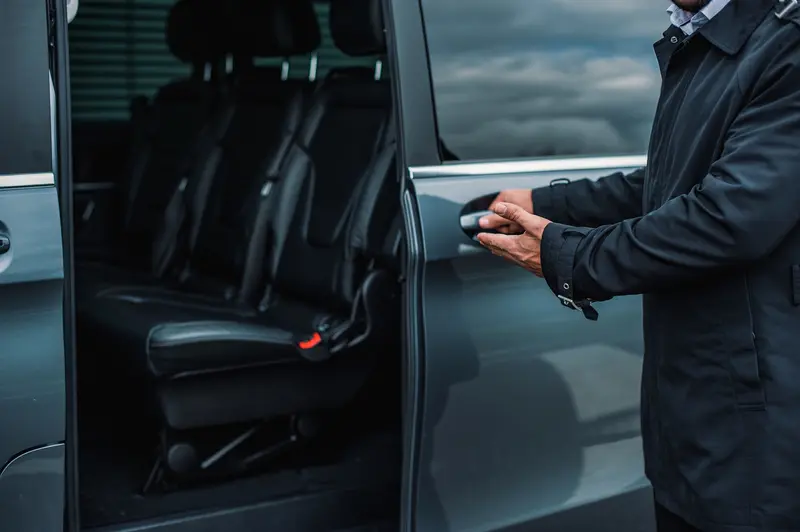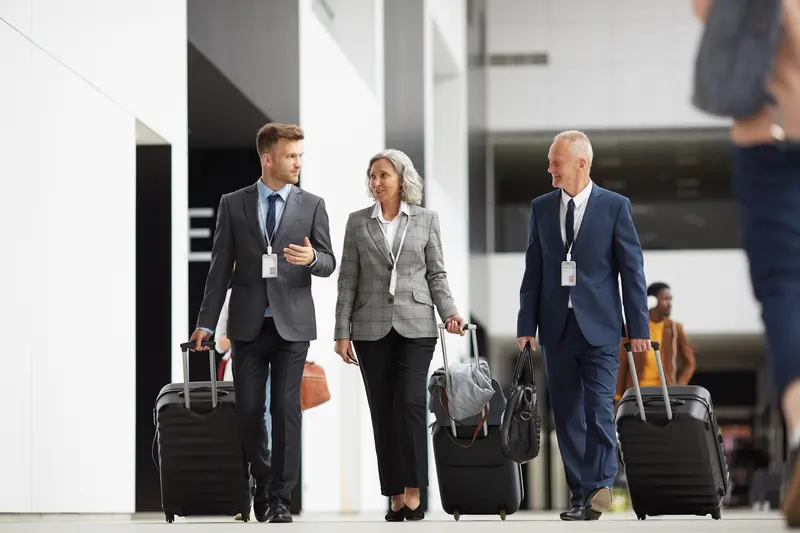Executive Travel Security: Key Measures for Safe Global Travel
Imagine you are a senior executive arriving in a foreign country to finalize a critical business transaction. The stakes are undeniably high. Recent travel advisories issued by the State Department have repeatedly cautioned travelers to exercise heightened vigilance when visiting this region. As your plane touches down, a crucial question arises: how can you maintain your safety and security until your departure?
While you may have secured travel insurance and arranged for a local team with a seasoned driver, these measures alone are insufficient in today’s complex environment. Geopolitical tensions, corporate espionage, and urban crime represent evolving security challenges that can rapidly escalate routine business travel into significant risk exposure. To effectively navigate these threats, proactive security risk assessments and well-prepared crisis management protocols are essential components of any executive travel plan.

Fortunately, there is a better way to navigate these challenges. You can hire a company offering executive travel security and travel risk management services. These teams, led by trained executive protection agents, integrate threat intelligence, cybersecurity protocols, logistical planning, and surveillance to deliver comprehensive travel solutions. Beyond safeguarding physical well-being, these professionals play critical roles in enforcing corporate security policies, ensuring that routine business activities, like handshakes, email communications, or rideshare trips, do not expose your organization to unnecessary risk or liability.
The Growing Importance of Risk Management While Traveling
The world, unfortunately, is not getting any safer. Travel inconveniences have evolved from misplaced luggage, unreliable local transportation, and jet lag to more serious issues. These include terrorism, political unrest, corporate espionage, and targeted kidnappings, all turbocharged with digital threats.
Why Corporate Travel Security Measures Matter Now
Political volatility is the new normal. Coups, contested elections, and terrorism across the world have been on the rise. Add to that a spike in executive travel-related threats and kidnappings. According to a 2021 study by the Ontic Center for Protective Intelligence, 15% of companies confirmed to have received threats targeting their executives.
There is also the digital Wild West. Compromised hotel Wi-Fi, weaponized Bluetooth-enabled devices, and location tracking through day-to-day applications such as fitness apps mean the bad guys have more avenues to cause harm. Sensitive company IP can be stolen and auctioned on the dark web with just one click.
A former CEO of an e-commerce company had their phone compromised after receiving a malicious WhatsApp message from a personal account of a world leader. While hackers did not get any data about the company, they successfully accessed private data, including photos and messages, sparking an international controversy..
This case highlights the vulnerabilities executives face and how much “smarter” the bad guys are becoming.
Executive Travel Security: Core Components of Overseas Travel Protection
An effective executive protection plan doesn’t begin at the airport; it starts weeks before departure with thorough intelligence gathering, strategic travel planning, and multiple layers of preparation.
Experienced security agents and executive protection teams undertake a variety of steps to ensure robust risk mitigation while keeping itineraries running like clockwork for their clients. These steps include:
Pre-Travel Intelligence & Global Threats Assessments
Executive Protection specialists begin the pre-travel intelligence phase even before a single bag is packed. While a quick Google search can be a great starting point, EP teams go further by cross-referencing OSAC reports, analyzing embassy advisories, and using local sources to flag hotspots—all in the interest of maximizing travel safety and minimizing risk exposure.
The information helps them build a threat profile for every location a VIP might visit. This includes hotel districts and transit chokepoints. Depending on the trip, they may also vet local hospitals and set up backup plans for emergency medical evacuations.
Itinerary Planning, Route Analysis & Security Protection
Once an EP team has mapped risks, they begin designing travel plans with risk mitigation at the forefront. Safe routes are pre-scouted, but they always have alternatives in place if anything unexpected arises. The main goal of having multiple plans is not only to avoid inconveniences like traffic but to eliminate potential vulnerabilities that could compromise the overall safety of the operation.
Another key factor in a good itinerary is timing. EP teams ensure VIPs avoid rush hours, late-night departures, or periods when unrest tends to spike.
Logistical Coordination
While a VIP security team coordinating foreign trips always ensures executives use safe vehicles, quality staff are the unsung heroes of secure travel. These teams bring vital considerations to each journey, such as vetting drivers, accompanying clients when needed, and selecting hotels with hardened entry points. Their situational awareness ensures that no detail is overlooked, enhancing safety at every stage of executive travel.
They can also partner with local security firms for ground support. Bringing on board former intelligence officers who know the VIPs’ destination better further ensures that nothing goes wrong.
Protective Intelligence
Preparation and protection efforts continue for the duration of the trip. Executive Protection teams continuously monitor real-time intelligence sources—including local news, weather alerts, and social platforms—to detect and respond to emerging threats. In highly publicized trips, they apply adaptive security strategies to manage operational continuity and minimize security risk, using advanced tools to monitor social media for doxxing attempts, online chatter, and location exposure.
Best Practices for Travel Safety & Security Strategies: From Planning to Return
Before any executive boards a flight, their protection detail has already mapped out emergency hospital routes, vetted drivers, and even researched the safest hotel floors.
Here is a guide to secure travel.
1. Pre-Departure Briefings
Secure travel starts before even a boarding pass is printed. A good pre-departure checklist should have:
Health and medical preparation: A team handling security for a traveling executive should check CDC guidelines for vaccinations and get travel insurance that preferably covers private medevac (medical evacuation) flights. Knowledge of local healthcare quality is also important.
Communication Protocols: The EP team must set designated check-in times and use encrypted apps like Signal for communications. Getting a local SIM card is also a smart way to avoid pricey roaming fees and keep the CEO connected.
Cultural & Legal Awareness: Researching local customs and being aware of laws such as bribery laws helps avoid accidental offenses and security risks.
2. Accommodation Security
As an executive, it’s important to look beyond just the “charming” boutique option when booking a hotel. Taking some extra time to research can significantly enhance your safety while traveling.
Start by choosing hotels that prioritize security—opt for properties with 24/7 security personnel, comprehensive CCTV coverage, and restricted-access floors. These features add valuable layers of protection without compromising your comfort.
When selecting your room, aim for floors three through six. These levels tend to be less vulnerable to break-ins and offer safer options for fire escapes. Alternatively, some executives prefer the top floors, which naturally limit access from outside. Whichever you choose, be sure the hotel has multiple emergency exits accessible from your room.
Before settling in, take a moment to conduct a quick security sweep. Check that all locks and windows work properly. Pay attention to anything that seems out of place—oddly hung artwork or unfamiliar devices may warrant a closer look. It’s also smart to inspect smoke detectors carefully, since, on rare occasions, hidden cameras have been concealed inside them.
3. In-Transit Security
A traveling executive should use VIP lounges, which, besides being safer, have fewer crowds. For business leaders who may be potential targets, opt for private security escorts and avoid obvious mistakes, such as not discreetly tagging your luggage.

You should also hire trained drivers and rotate commute times and routes to avoid being predictable. Additionally, ensure that vehicles have full tanks and that all doors are securely locked at all times.
4. Emergency Response & Evacuation Plans
A good VIP security team should always hope for the best and prepare for the worst. In case of an attempted kidnapping, civil unrest, or a natural disaster/severe weather incident, you should have a solid evacuation plan.
First, cultivate partnerships with local law enforcement or reliable private security companies that can spring into action in minutes.
Second, you should supplement these measures with technology. GPS trackers, real-time incident reporting tools, and panic buttons can give an EP team an upper hand in evacuating VIPs in danger.
5. Cybersecurity On-the-Go
Do not overlook digital threats while traveling. You should avoid public Wi-Fi; if you must connect, always use trusted virtual private networks (VPNs). Additionally, observe data diet by traveling with minimal sensitive intel and encrypting everything.
You should also be alert to phishing attempts. If you get an email that looks like it’s from a client or colleague asking you to click a link or download a file unexpectedly, verify it before taking any action.
The Role of Advanced Reconnaissance, Technology & Communication For Personal Protection
In 2025, technology-driven reconnaissance is rewriting the playbook on how companies protect their leaders and reputations while traveling.
Here’s how:
Tech-Driven Reconnaissance
The days of relying on gut instinct are long gone. Professional EP teams now rely on a range of tools, including satellite imagery and drones. They can easily map high-risk zones before moving. AI-powered intel software also helps scan global threat databases to predict hotspots and weather changes.
Additionally, there are advanced social media scraping tools EP teams can use to detect danger. They can use these tools to identify protest plans, trending hashtags, and signs of viral unrest before traditional media houses report them.
Real-Time Tracking & Communication
Traveling from the airport to the hotel or hotel to a venue in a foreign country can be made easier and safer through continuous dialogue with a centralized Security Operations Center (SOC). EP teams can use encrypted GPS devices and secure communication apps for instant updates.
Example: An EP team protecting a prominent executive avoided a protest organized just two blocks away. The SOC analysts spotted a Telegram channel organizing a protest, only 90 minutes before the VIP’s arrival.
While the security team had thoroughly planned the trip, including analyzing geopolitical factors, real-time tracking helped avoid harm to the executive and damage to the company’s reputation.
The team diverted to a secure compound, rescheduled the rest of the day’s meetings, and conducted some of the remaining meetings via Zoom. The executive’s trip was successful thanks to acting fast and having alternative plans.
Coordinating with Local Authorities & Cultural Nuances
Keeping an executive safe today means juggling legal hoops, cultural landmines, and maintaining good relations. Here is how professional EP teams are navigating chaos.
Legal Considerations & Compliance
In major business destinations like Japan and the UAE, bearing arms to protect VIPs can trigger anything from endless paperwork to handcuffs.
Experienced teams move early and contact law enforcement to decode regulations and secure permits. While compliance is not glamorous, it is the best way to avoid becoming a geopolitical headline or explaining to a CEO why their bodyguards are in a foreign jail.
Cultural Sensitivity
EP teams must also be culturally sensitive to avoid missteps. For example, aggressive eye contact in Seoul, a poorly timed handshake, or not accepting tea in some regions may draw unwanted attention to a security team.
To avoid such mistakes, VIP security teams should be briefed on cultures, including dos and don’ts, to ensure effective protection. EP teams can hire cultural advisers or interpreters for this task.
Community Relations
In addition to respecting local customs, executive protection operatives should minimize disruptions by being invisible. They should avoid confrontational stances and, if need be, work closely with venue staff.
Additionally, they should prepare routes that avoid sensitive areas such as religious sites or raise local tensions.
Common Mistakes & How to Avoid Them in Overseas Executive Travel Protection
A hidden pitfall: executives sharing their travel details on social media, inadvertently revealing routes and timelines to potential adversaries.

Here are some of the mistakes even seasoned executives make and how to avoid them.
1. Underestimating the Importance of Pre-Trip Planning
Relying solely on a single bodyguard or an unprepared local team is a critical security flaw. Instead, executives should partner with global security firms that follow pre-planning routines such as checking geopolitical updates, exit strategies in case anything happens, and medical facilities around.
The hired EP team must also provide real-time threat assessments and vet local partners.
2. Lack of Flexibility
Sticking to a rigid security plan when traveling can be a huge mistake. In our unpredictable world, anything can happen, including protests, severe weather, or suspicious activity near an executive’s hotel.
This can be fixed by having flexible plans and relying on apps or technology that offer real-time alerts. Remember, plans should be treated as living documents.
3. Poor Communication
Saying “we will figure it out” when it comes to communication can quickly lead to misunderstandings and security risks. Relying on unsecured channels like regular SMS or social media direct messages exposes sensitive information to potential leaks or interception, which can compromise your safety and cause unnecessary delays. As an executive on the move, it’s important to plan your communication carefully by using encrypted messaging apps designed to protect your conversations. These apps ensure that your calls, texts, and file transfers remain confidential and secure, giving you peace of mind.
4. Ignoring Cyber Threats
Executives frequently overlook their vulnerability to cyberattacks. They may use unsecured public networks or hotel Wi-Fi overseas, risking their personal and company data. Instead, they should always use a VPN, enable MFA (Multi-Factor Authentication), and wait until they are home to share details of their trip with colleagues on LinkedIn.
Summary:
Whether it is an executive for a Fortune 500 company, a startup, or a founder of a mid-sized company traveling abroad for business, executive protection is a necessity. It safeguards them from any harm and protects their business’s reputation. A single incident abroad can trigger a domino effect, including stock dips, PR nightmares, and even operational chaos.
Three pillars separate a smooth trip from a headline-making crisis. Emergency evacuation planning—covering routes, medical contingencies, and secure extraction—lays the foundation for a seamless journey. Intelligence is also key. Real-time threat monitoring of local unrest, weather events, and social media chatter ensures VIPs receive effective executive travel protection, especially in high-risk environments. The final pillar is adaptability, where skilled protection agents must pivot without panic, keeping threats invisible and maintaining discretion for business leaders on the move.
Is your company’s executive planning an important trip? Turn uncertainty into confidence with a trusted team that understands both strategic logistics and high-stakes travel. Schedule a consultation today to learn about our Executive Protection Services, where elite planning meets corporate-grade security expertise.




